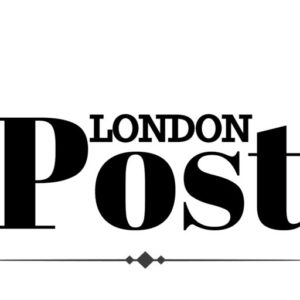London Transport Museum is calling on transport enthusiasts, design lovers, and people who love London and its story to help raise £30,000 to complete the restoration of a rare and important piece of the capital’s transport heritage — the last three 1930s Q stock carriages, also called ‘cars’.
The Museum needs to raise the funds to re-upholster the seats in iconic and historical moquette – the durable, woollen seating material used in upholstery on public transport all over the world. The Museum has secured funds to re-upholster one of the cars and is now seeking £30,000 from the public to fund the re-upholstery for the final two.
The restoration of the three Q stock carriages is a long-term project that has mostly taken place at the London Transport Museum Depot in Acton, west London. The aim is to get them back up and running and in operational condition.
Q stock trains entered service on the District line in November 1938. They kept London moving through a transformative era of history – from transporting Londoners from the dark days of the Second World War through to the swinging sixties before being retired from service. Unlike today’s identical carriages, Q stock trains were formed from a combination of cars with different designs. Passengers never knew what formation of carriages would pull into their platform.
The interiors of the cars are being restored by the Museum to reflect different moments from this long history on the tracks. One will explore life in wartime London; the second will reflect life during the post-war years of austerity; and the third will illustrate the growing optimism and prosperity of the 1950s, as well as tell a story of direct recruitment to London Transport from the Caribbean.
Elizabeth McKay, Director and CEO, London Transport Museum, said: ‘Q stock Underground carriages transported Londoners on the District line across a significant era of change and hold countless memories. From wartime evacuations through to the buzz of the sixties, and from life-changing journeys to quiet commutes – they were a constant in a city always on the move.’
‘These iconic Underground cars wouldn’t be complete without distinctive moquette seats, which we know were designed by pioneering women like Joy Jarvis and Enid Marx. The Museum has been able to secure funds to reupholster one Q stock car as part of the restoration project, but we need the public’s help to raise £30,000 for the final two. Every donation will safeguard this treasured part of history to inspire and delight future generations.’
Since the creation of London Transport in 1933, artists and designers have been specially commissioned to create stylish, contemporary moquette patterns for Tube trains, buses, trams, trolleybuses and, more recently, London’s cable car over the Thames.
As part of London Transport Museum’s work to bring the Q stock cars back to their former glory, its curatorial team have been working hard to determine historical moquette designs for each car. This includes carefully examining over 300 historic photographs from 1920 to the present day and the Museum’s archive of over 400 moquette samples.
The chosen designs for the two Q stock Underground cars that the Museum is seeking support to re-upholster highlight the central role women played in deciding how train and bus interiors would look.
• Joy Jarvis was a textile designer during the 1940s. She was responsible for the iconic ‘Roundel’ and ‘Bullseye’ moquette design which, until recently, was erroneously attributed to a male designer. ‘Roundel’ c1947 features a circle with light and dark green sections overlaid with the red roundel motif, the corporate symbol of London Transport. It would have been seen on trains throughout the 1948 London Olympics through to the arrival of the Windrush Generation to the UK. It will be used as part of the restoration project in car no. 4416 and will represent the year 1956
• ‘Shield’ c1948 designed by Enid Marx will be used in car no. 4417, which will represent the year 1948. Enid Marx (1902-1998) was an influential artist and designer whose wide-ranging work included textile design, printmaking, book illustration and even postage stamps. London Transport was one of her many clients. Officially known as ‘Messrs Holdsworth No 11581’, ‘Shield’ was originally produced in 1934. The green and red design appeared on sub-surface trains on the District line towards the end of the Second World War
The public’s support can make a material difference to help finish the Q stock restoration project and tell the stories of these women designers.
• £150 could go towards purchasing a roll of moquette
• £220 could go towards re-upholstering a single seat, cushion and back
• £320 could go towards re-upholstering a double seat, cushion and back
• £500 could help buy the armrest material for an entire car
This project could only be undertaken thanks to the ongoing and dedicated support of the Museum’s team of volunteers, London Transport Museum Friends and generous donations from the public, including former transport professionals remembering the Museum in their wills. This includes a generous bequest from the late Bob Greenaway, a well-respected Underground mechanical engineer, former President of the London Underground Railway Society (LURS) and past Editor of Underground News.
Donations can be made on London Transport Museum’s website: www.ltmuseum.co.uk/make-donation?campaign=qstock








